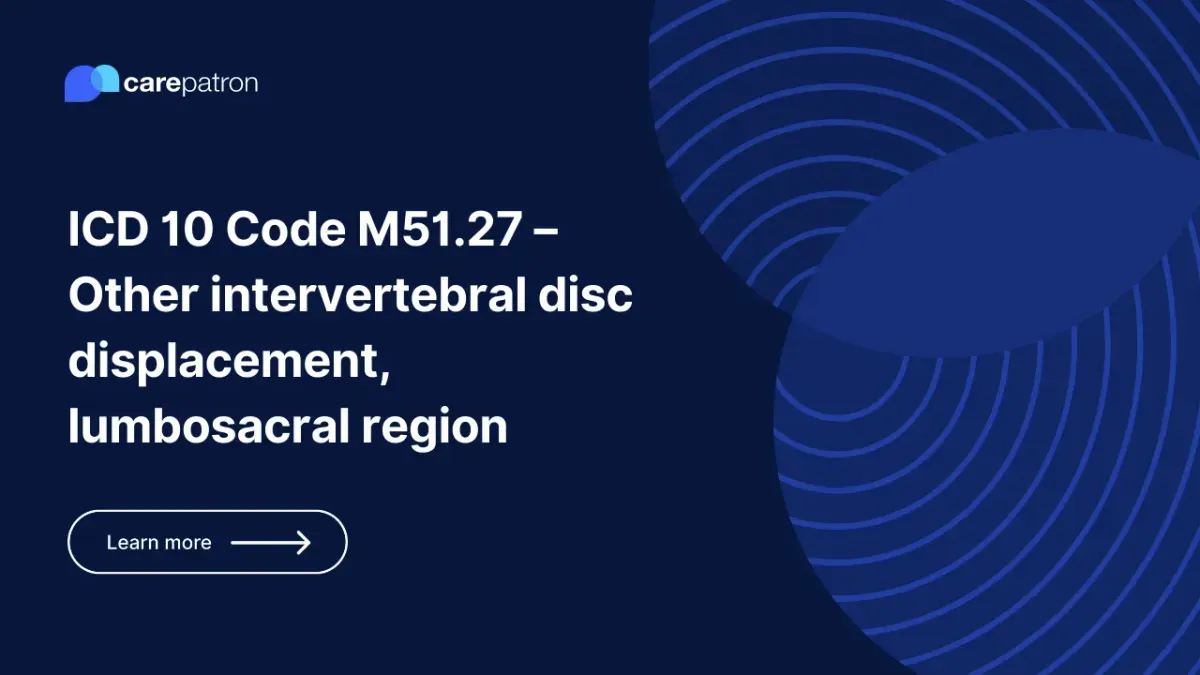
M51.27 – Other intervertebral disc displacement, lumbosacral region
Learn what the ICD-10-CM code M51.27 entails, from its clinical information to its billability, and even answers to FAQs.
Use Code
Commonly asked questions
Yes, this ICD-10 code is billable.
When tests confirm that the patient has a displaced intervertebral disc in the lumbosacral region of their spine.
Ice and heat compress, rest, exercise, physical therapy, medication (pain relievers, muscle relaxants, anti-inflammatory medicine), and steroid injections.
EHR and practice management software
Get started for free
*No credit card required
Free
$0/usd
Unlimited clients
Telehealth
1GB of storage
Client portal text
Automated billing and online payments
